The vanishing
Twenty-five years ago, I stumbled upon a piece of my old hometown in my new hometown — a full-size, functional Liberty Bell — just sitting there in the middle of Denver. From the accompanying plaque, I learned it was a promotional tool commissioned by the U.S. Treasury to sell Savings Bonds in the summer of 1950. There’s one in every state and some territories. So, as any red-blooded Philadelphian would do, I set out to see them all and share their stories.
I soon learned the 57 U.S. Treasury Liberty Bells aren’t the half of it. Texas alone has seven. Florida has five. You can find them in cemeteries, colleges, the lobby of a fondue restaurant in Delaware, parks in Tokyo and Jerusalem and a front yard in Lomita, California.
Some bells fall into disrepair, unceremoniously stashed away in parking garages. A few have simply vanished. This is the story of how one such bell was lost in plain sight in Phoenix, Arizona, and how it got there in the first place.
The cattleman
In 1950, second-generation cattleman Phil Tovrea (toe-vree) is living high on the hog. Sixty-seven years prior, a 22-year-old Edward Ambrose Tovrea hitched a ride on a freight wagon in his native Illinois and hopped off in Arizona, seeking fame and fortune. He opened a butcher shop, slung tons of meat, became mayor of the wickedest town in the west, served as a delegate to Arizona’s constitutional convention, earned the moniker “Big Daddy,” and ultimately became one of the country’s wealthiest cattle barons.
Tovrea Cattle owned and operated a feedlot and meatpacking plant on the outskirts of Phoenix. In 1928 Alessio Carraro erected a boutique wedding-cake-shaped hotel on a neighboring 277-acre parcel with plans to build surrounding homes. The Great Depression killed Carraro’s dream before the hotel ever opened. Instead, Tovrea bought the property. Arizona’s royal ranching family now had their castle.
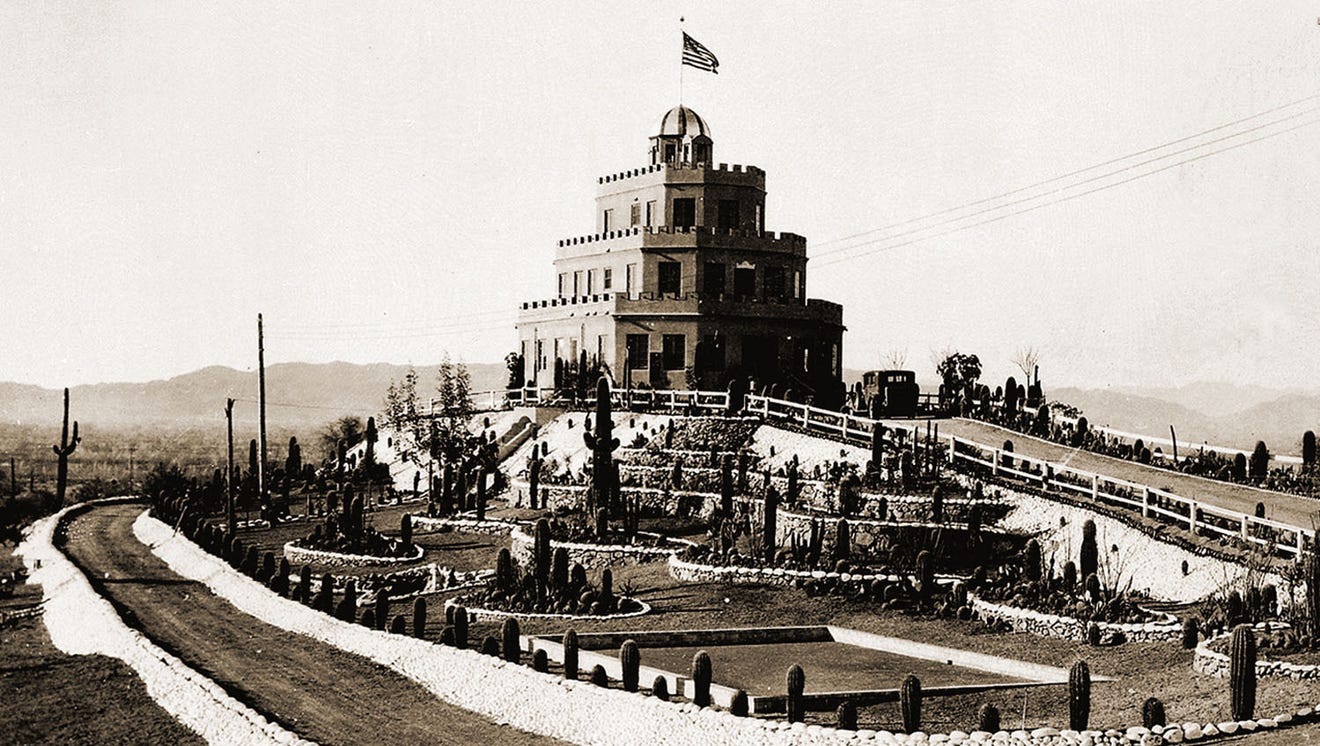
Since joining the family business in 1929, his son, “Big Phil” has expanded the empire, founded the Farmers and Stockmens bank, and, with his wife Helen, built the Stockyards steakhouse next door to the feedlot — guaranteeing the freshest steaks in town if the same could not be said for the air. As the business grew, Phoenix grew to surround it, and property values soared. Recognizing their most valuable asset, the family rebranded the business as the Tovrea Land and Cattle Company.
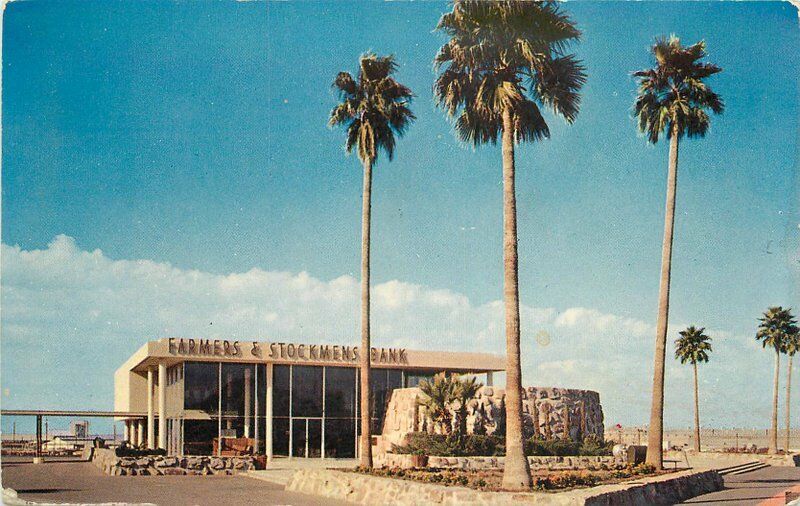
The bellmaker
It’s the spring of 1950, and Alfred Paccard is hustling. The sixth-generation to run the family business, he and his brother Henri are steadily working through a two-year backlog, replacing some of the 150,000 bells pillaged and melted down by the Nazis in the Second World War. The bell business hasn’t been this good since the French Revolution.
In 1796, the small French commune of Quintal needed both a bell and a priest, the former having been a casualty of war. The bells were not only a useful source of bronze to make cannons; they were prominent symbols of the very monarchy the Revolution sought to destroy. When Quintal asked their bishop to send a priest, he replied with an ultimatum, “You will have a priest when you have a bell at your belfry.”
So Antione Paccard, the 25-year-old mayor of Quintal, brought in Jean-Baptiste Pitton, an itinerant bell maker. Pitton needed an assistant. Paccard volunteered.
Bells were challenging to transport, so itinerant bell makers, known as saintiers, would roll into town, dig a hole in front of the church, cast a bell in the hole, hoist the bell into the steeple and move on to the next town.
Pitton moved on, but Piccard stayed and opened a foundry in nearby Annecy-le-Vieux, working to replace the nearly 10,000 French bells destroyed in the Revolution.

The Tovrea Stockyards, sometime before 1950
As fate would have it
On a business trip in early May 1950, Phil Tovrea happened upon the Paccard foundry just as the Frenchmen were working on the most American of assignments. Bell making can be feast or famine, and the Paccards have seen both. So when, despite the two-year backlog, the U.S. Treasury called and needed at least fifty bells in a hurry, they jumped at the opportunity.
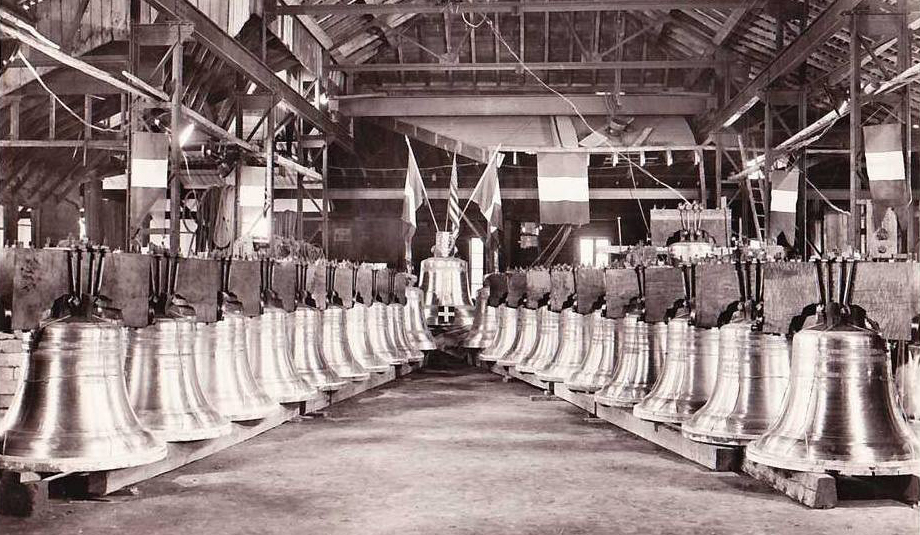
Fifty-some Liberty Bells, fresh out the oven.
Tovrea was so impressed watching the casting process he told Alfred he wanted his own. Paccard would cast 57 serial-numbered bells and then Tovrea’s replica, sans-serial but otherwise identical. Despite the language barrier, the cattleman and the bellmaker became fast friends.
In October, when Paccard came to Independence, Missouri, to present Liberty Bell replica #54 as a token of friendship to President Truman’s hometown, he first stopped over in Phoenix to visit Tovrea and tour his business operation. When Tovrea unveiled his bell later that month, he became perhaps the world’s first private citizen to own a Liberty Bell.
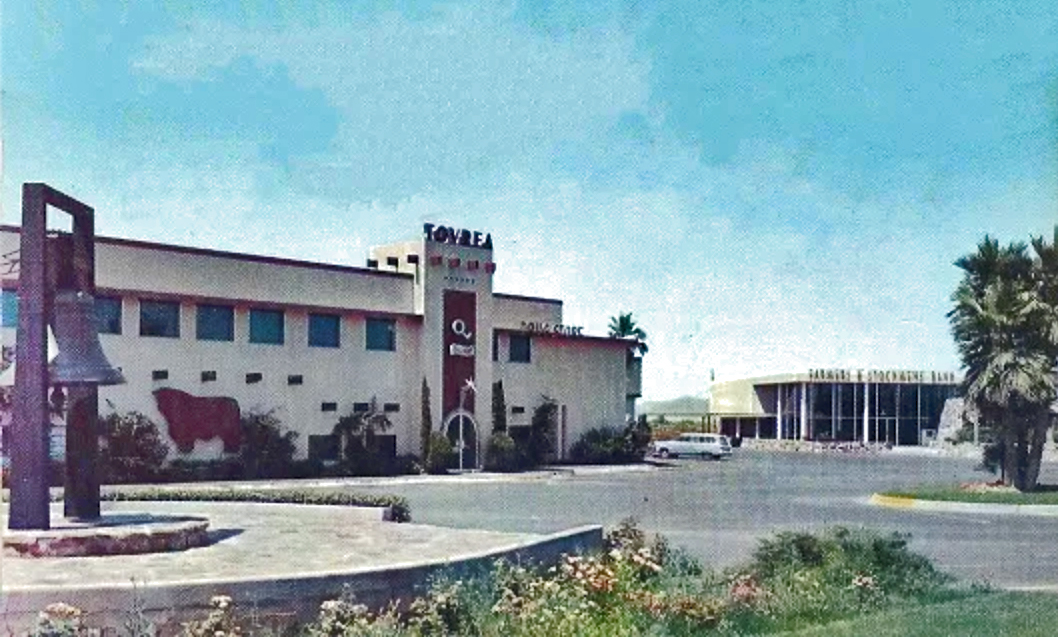
The Tovrea Liberty Bell’s original location in front of the Stockyards restaurant
Ringing true
As the American economy boomed through the early 1950s, so too did the Tovrea Land and Cattle Company. The restaurant and its Liberty Bell became Phoenix fixtures. Marilyn Tovrea Edwards, the granddaughter of Helen and Big Phil, fondly remembers the bell’s glory days. “Every time we went to the Stockyards restaurant or the attached Exchange building, my grandmother would let us ring the bell and what a treat that was for us!”
In a 1956 interview with the Arizona Republic, Phil Tovrea shows no signs of slowing down. “The cattleman is the only operation not being gobbled up by the big ones. He is an independent and will always be one. The cattlemen operate in the last free market in America. When times get tight, they just buckle up their belts and go back to beans.”
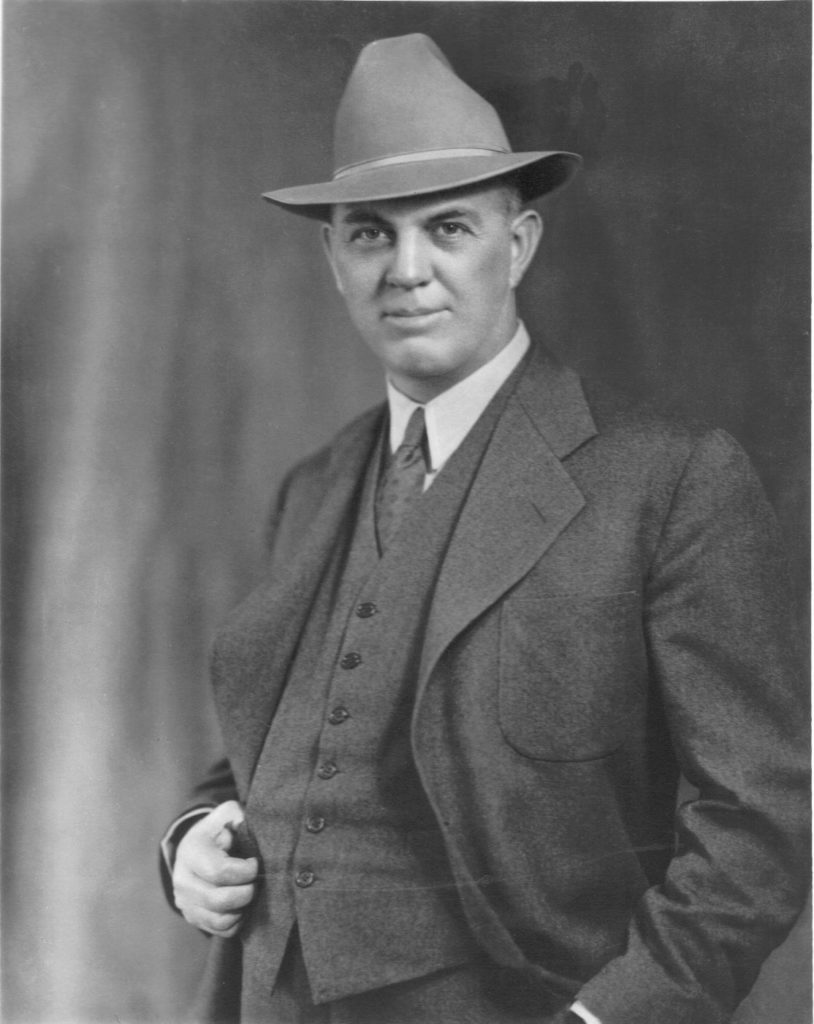
Back to beans
The 63-year-old patriarch dissolved the Tovrea Land and Cattle Company two years later, distributing its assets to about 25 stockholders, mostly family members. The family trust sold off much of the land to developers. Contemplating retired life, Phil Tovrea opined, “I won’t be very active. But I guess I’ll have a ranch of some kind. I’d be lost without a few cows around me.” In four years, he was dead.
Changing times
Throughout the second half of the century, motels and mini-malls popped up where the cattle once roamed. As nearby Sky Harbor airport expanded, the Stockyards restaurant stayed afloat under new ownership, but the remaining Tovrea buildings gradually fell into disrepair.
In 1991, trustees for the family estate requested a permit to demolish Tovrea Castle. The Phoenix Historic Preservation Commission gave the city one year to purchase the property before it would green-light demolition.
The move was more likely a power play to drive up the purchase price than a real threat. Phil Tovrea III, a construction worker and mayor of Jerome (just like his great-grandfather), had been the castle’s sole caretaker for over a decade at this point, and it was unlikely the family would destroy the most prominent symbol of their reign. Nonetheless, Phoenix voters overwhelmingly approved a $5 million bond issue to purchase the castle and surrounding 44-acre cactus garden.
The fate of the Tovrea Exchange building was less certain. Shuttered and abandoned for decades, native sagebrush and deer grass reclaimed the surrounding land, and the Liberty Bell very slowly disappeared. In plain sight. In the middle of Phoenix.
Liberty rising
The Tovrea Liberty Bell likely would have remained lost to time or sold for scrap if not for the Jokake Companies; an enterprising developer bent on historic preservation.
In 2004, the developer bought and painstakingly restored the Exchange building and Stockyards restaurant. But when it came to resurrecting Phoenix’s lost history, they got more than they bargained for. Accounting Manager Erica Veach, who brought this story to my attention, explains how the Liberty Bell was an unexpected bonus, “It was lost in the brush when the company purchased the property. They didn’t know it was there.”
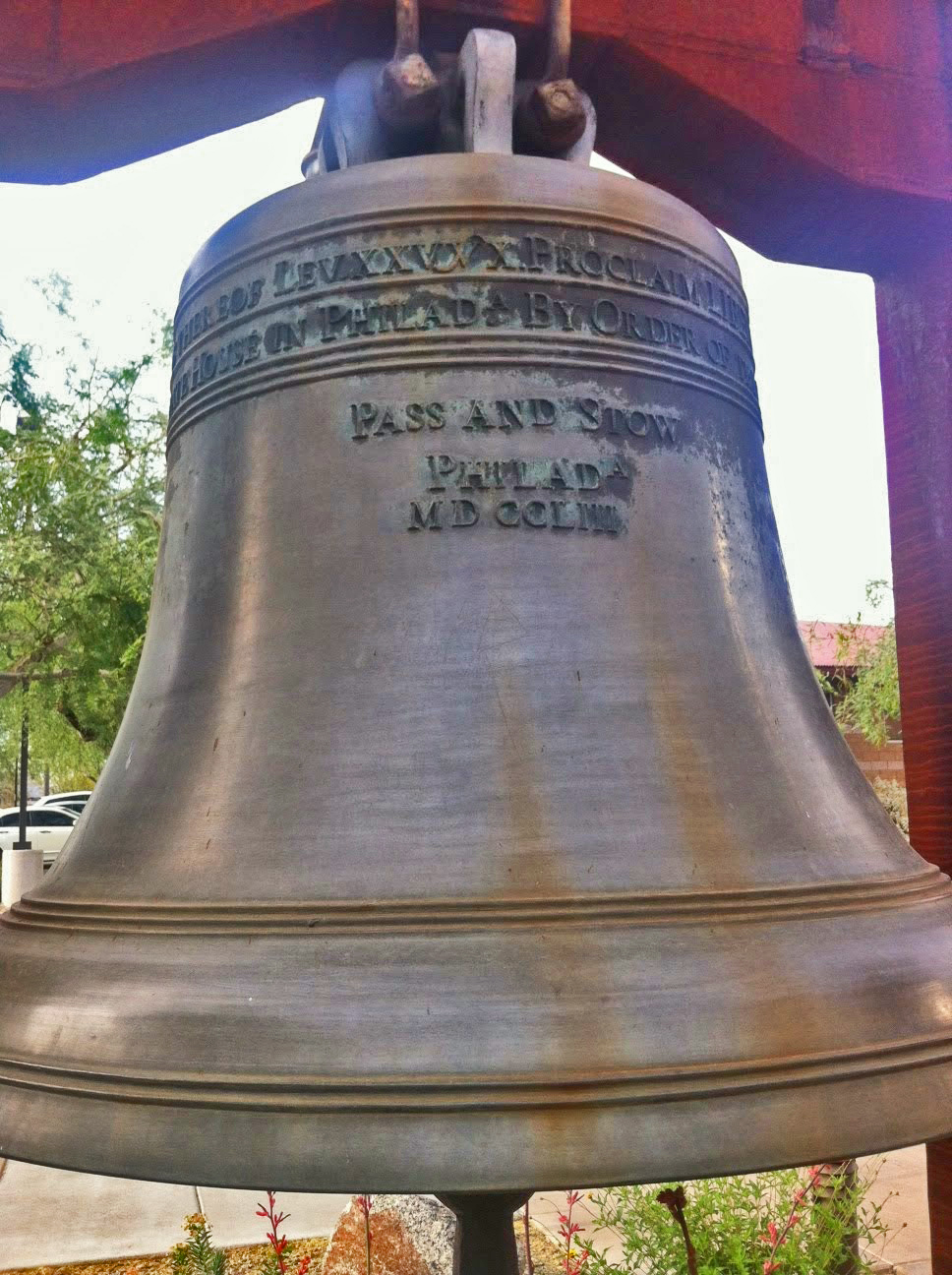
Phil Tovrea’s Liberty Bell replica today. photo: Erica Veach
Fifty-four years after it arrived, Phil Tovrea’s Liberty Bell was reinstalled close to its original location — in front of the restored Exchange building, which now houses the Jokake Company’s corporate offices along with other tenants. The City of Phoenix added the Stockyards restaurant to their Historic Register for its central role in Arizona’s cattle industry and its relevant architectural style.
In partnership with the city, Jokake bought the Farmers and Stockmens Bank in 2015. The midcentury marvel is now home to an architecture firm.
Tovrea Castle opened for public tours right in time for the state’s 2012 centennial. The grounds host 5,000 cacti in 100 varieties.
Plan ahead and come hungry
The full Tovrea experience would not be complete without touring the castle and gardens, chowing down at the Stockyards and gently bonging Mr. Tovrea’s bell with your knuckles. But plan ahead. Castle tours are so popular you must first enter a lottery to win the chance to buy a ticket. The lottery for fall 2022 tickets opens on June 1.
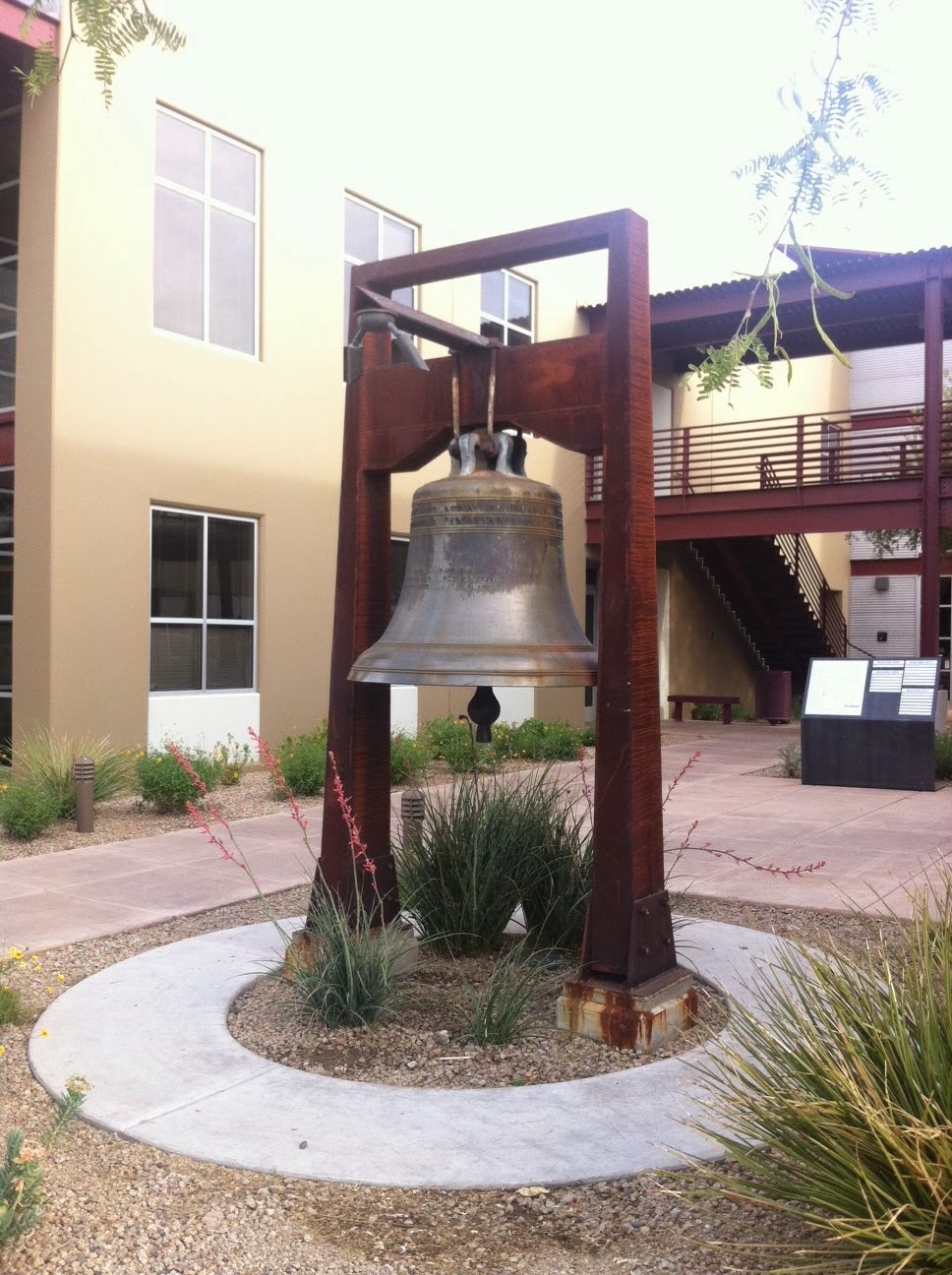
Pingback: National Treasury: the case of DC’s missing Liberty Bell
Hi, Tom. Great Article.
However, point of fact, Tovrea Castle was built by Alessio Carraro (not Philip Edward Tovrea Sr) in 1928 to be a boutique hotel with home sites surrounding the Castle on his 277 acre parcel. Due to the economic times, (Great Depression) Mr. Carraro sold the Castle to E.A. Tovrea and his wife, Della, in 1931, never having opened his hotel.
Mr. Tovrea died shortly after he and Della’s move into the Castle; no murder ever took place on the property – another Tovrea, another location, another time.
“Big Phil” was running the Tovrea business at the time of E.A.’s death, but never lived in the Castle. He resided in the Tovrea Mansion just west of the Castle with the company sandwiched in between. His wife, Helen, was instrumental in the original decor of the Stockyards Restaurant and was keen about Liberty Bells, as well.
His Liberty Bell is a great feature on the property just south of the Castle and definitely worth a visit!
We are proud to be neighbors of The Stockyards with a deep Tovrea History, and commend Jokake Companies for helping keep the history of our area alive and well!
Thanks for letting me update:
Tamera Zivic, President, Tovrea Carraro Society, Operating Tovrea Castle at Carraro Heights
Tamera, Thanks for writing and thanks for the clarification. I’ll revise the article accordingly. May I quote you in it?
The Tovrea’s home was located at 4633 E Van Buren in Phoenix, a block away from the Stockyards Restaurant.
When the restaurant burned down (kitchen fire) the Tovrea’s rebuilt it. My Dad, Philip E Tovrea, Jr. designed it. A local architect was asked to sign off on the plans because my dad was not a licensed architect. He was gifted enough for Frank Lloyd Wright to ask him to join him but my father declined. Helen (Nonie to her grand and great-grandchildren) was in charge of the interior decoration. My father had a hand in that too. Both of them were gifted.
Every time we went to the Stockyards Restaurant or the attached Exchange building my grandmother would let us ring the bell and what a treat that was for us!!! It was on a raised platform by itself with steps leading up to it a little to the East of the Exchange building near Washington street.
My cousins, Lou and Ed Spelts billed our grandparents’ home as The Tovrea Mansion after they bought the house from our grandmother’s, Helen Tovrea, estate and rented it out for weddings and parties. It was never known as The Tovrea Mansion prior to that.
— Marilyn (Cissy) Tovrea Edwards
Absolutely. Thanks, Tom.